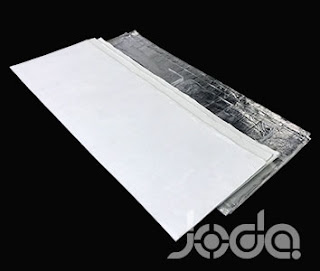Aerogels Look Promising For Light-weight Insulation
Aerogels Look Promising For Light-weight Insulation
Light-weight, high-performance is king in aerospace and aviation applications. And just as composites and metals like titanium are replacing heavier materials in structures, aerogels may increasingly replace foam and fiber for insulation, according to Shejal Jamdade, senior research analyst for Transparency Market Research (TMR). TMR projects that total aerogel use will grow 15% annually to reach more than $1 billion by 2023, and transportation, including aircraft, will be the fastest-growing market.
Silica, metal-oxide, carbon, polymer and other aerogels are exceptionally light-weight insulating materials with low density, porous structure, and lower thermal conductivity than most conventional insulation. They contain more than 95% air and other particles suspended in a three-dimensional structure. Invented in 1931, aerogels were used on the 2003 missions that carried the rovers Spirit and Opportunity to Mars and have since been commercialized.
Jamdade foresees aerogels being used for thermal, acoustic and vibration insulation. The material could be used on aircraft engines, in insulation blankets inside aircraft compartments and in pipes and wires. Low weight combines with less required space and higher durability to make aerogels very attractive, compared with fiber and foam. Most aerospace gels are silica now, but the TMR researcher predicts Polymer Cross-Linked Aerogels will have even better properties, including flexibility and resistance to fracture.
The hang-up to date has been cost, but that is changing. To replace a given amount of conventional insulation costing $5-8 would now require about $35 worth of aerogel. Jamdade expects that cost to come down by about 85%, putting aerogels at much the same price point as traditional options. Add in weight and space saving and a 30- to 40-year low-maintenance lifespan, and the balance should tilt strongly to the new materials. The TMR researcher foresees aerogels benefitting the Hypersonic Inflatable Aerodynamic Decelerator in new NASA spacecraft and playing a much bigger role in commercial, military and private aircraft.
Light-weight, high-performance is king in aerospace and aviation applications. And just as composites and metals like titanium are replacing heavier materials in structures, aerogels may increasingly replace foam and fiber for insulation, according to Shejal Jamdade, senior research analyst for Transparency Market Research (TMR). TMR projects that total aerogel use will grow 15% annually to reach more than $1 billion by 2023, and transportation, including aircraft, will be the fastest-growing market.
Silica, metal-oxide, carbon, polymer and other aerogels are exceptionally light-weight insulating materials with low density, porous structure, and lower thermal conductivity than most conventional insulation. They contain more than 95% air and other particles suspended in a three-dimensional structure. Invented in 1931, aerogels were used on the 2003 missions that carried the rovers Spirit and Opportunity to Mars and have since been commercialized.
Jamdade foresees aerogels being used for thermal, acoustic and vibration insulation. The material could be used on aircraft engines, in insulation blankets inside aircraft compartments and in pipes and wires. Low weight combines with less required space and higher durability to make aerogels very attractive, compared with fiber and foam. Most aerospace gels are silica now, but the TMR researcher predicts Polymer Cross-Linked Aerogels will have even better properties, including flexibility and resistance to fracture.
The hang-up to date has been cost, but that is changing. To replace a given amount of conventional insulation costing $5-8 would now require about $35 worth of aerogel. Jamdade expects that cost to come down by about 85%, putting aerogels at much the same price point as traditional options. Add in weight and space saving and a 30- to 40-year low-maintenance lifespan, and the balance should tilt strongly to the new materials. The TMR researcher foresees aerogels benefitting the Hypersonic Inflatable Aerodynamic Decelerator in new NASA spacecraft and playing a much bigger role in commercial, military and private aircraft.
Joda aslo manufacturer automatic anode jacking frame, ladles accessories, aerogel insulation blanket, anode jacking system, anode clamp, bimetal, aluminum ladle cleaning machine, MTV tapping tube cleaner and aluminium ceiling panel etc.




评论
发表评论